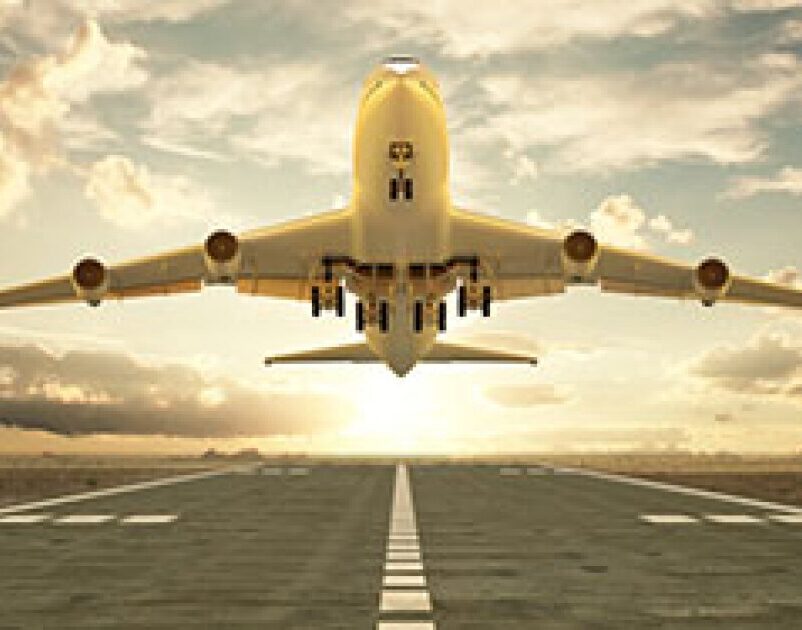
Global insurer Allianz Commercial recently released a new risk report
Aviation has been using AI for many years, and the current speed of developments means it is revolutionizing the industry in various ways, from enhancing flight safety and improving maintenance procedures to personalizing the passenger experience and optimizing route management.
AI can help optimize flight paths for fuel efficiency and on-time performance. By analyzing weather patterns, air traffic and other factors, it can suggest the most efficient routes, saving time and reducing fuel consumption. While incorporating such systems involves investment, it should also improve the bottom line with an added benefit of potentially reducing emissions and contributing to airlines’ sustainability goals.
AI can also have a direct impact on customer interactions. AI-powered chatbots can provide anything from instant customer service to personalized recommendations for in-flight entertainment and services. The end result should be increased customer satisfaction as well as long-term cost savings.
Potential efficiency improvements can also be extended to the wider aviation ecosystem including air traffic control, where AI is being implemented in systems to manage the complex flow of air traffic more efficiently. By processing vast amounts of data, AI can help controllers make more informed decisions and maintain safety in increasingly crowded skies.
According to Adam Tozzi, head of underwriting global tasks and processes, aviation, at Allianz Commercial, “Perhaps the most interesting area for AI development for the sector (and its insurers) lies in improvements to flight safety, maintenance and repairs. AI algorithms can analyze data from flight recorders and sensors along with historic data to predict potential system failures before they occur, allowing for preventative maintenance and reducing the risk of accidents. AI-driven simulations and predictive analytics can be used for training pilots, providing them with realistic scenarios and helping them make better decisions in critical situations. AI can even improve security at airports, in particular via biometric identification and evaluation.”
Further into the future, we may even see AI introduced into cockpits to assist with the all-important business of flying the plane. An important part of this will be the certification process. AI could achieve a good result but in a completely different way to a human. This is a big challenge for manufacturers with the operational liability that may transfer to them with autonomous aircraft
Challenges on the radar
And with reward comes other risks. While AI offers numerous benefits, there are challenges to consider, such as ensuring data privacy and maintaining rigorous safety standards as AI systems become more autonomous.
An AI program is only as good as the data it consumes. Poor quality data could lead to incorrect outputs and unconscious bias, affecting safety, efficiency and passenger experience. A human-centric and monitored approach remains essential to ensure aviation maintains its superb reputation for safety.
That said, the more delicate human capital element cannot be ignored. AI might increase efficiencies, but it might also reduce jobs and opportunities, particularly for younger people starting out in the sector. The industry has a responsibility to continue to retain and train the best individuals to ensure knowledge is passed down to the generations rather than lost through reliance on AI systems.
Finally, there are also legal issues around data — data protection laws; intellectual property considerations and confidentiality requirements — with the regulatory environment likely to change to keep pace with such a fastmoving sector achieve a good result but in a completely different way to a human. This is a big challenge for manufacturers with the operational liability that may transfer to them with autonomous aircraft.
Focus on cyber
The focus on data security also sits alongside the greater focus on cyber threats, which was the top risk in the most recent Allianz Risk Barometer and the second top risk as voted for by aviation respondents. The increasing concern is not a surprise given certain high profile cyber incidents in the aviation sector in recent years. During 2023 alone, cyber incidents impacted the likes of Air Canada, Kenya Airways, Boeing, Manchester Airport and Copenhagen Airport, among many others. While business interruption cyber events are not covered under traditional aviation insurance, standalone cyber insurance offers solutions that can help protect companies against these risks.
AI holds the promise of making aviation safer, more efficient and more enjoyable for passengers. As technology continues to evolve, it will undoubtedly unlock new possibilities and drive innovation in the aerospace sector. The aviation industry is poised to soar to new heights with AI as a fundamental part of its journey into the future. Aviation insurers have a crucial role to play in helping the sector on this exciting journey.
See more



